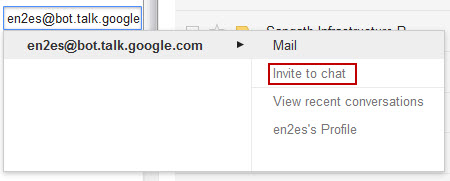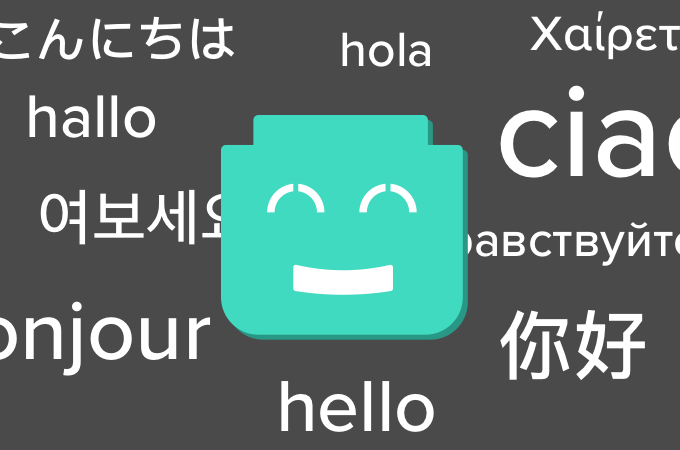

- #TELEGRAM GOOGLE TRANSLATE BOT INSTALL#
- #TELEGRAM GOOGLE TRANSLATE BOT FULL#
- #TELEGRAM GOOGLE TRANSLATE BOT DOWNLOAD#

bot.sendMessage(chat_id=_id, text="I'm a bot, please talk to me!") Now, we need to define a function that should process a specific type of update: > def start(bot, update): To generate an Access Token, we have to talk to BotFather and follow a few simple steps (described here).įirst, we create an Updater object: > from telegram.ext import Updaterįor quicker access to the Dispatcher used by our Updater, we can introduce it locally: > dispatcher = updater.dispatcher Note: If you have done this in the previous step, you can use that one. We can register handler functions in the Dispatcher to make our bot react to Telegram commands, messages and even arbitrary updates. It provides an easy-to-use interface to the telegram.Bot by caring about getting new updates with the Updater class from telegram and forwarding them to the Dispatcher class. The telegram.ext submodule is built on top of the bare-metal API.
#TELEGRAM GOOGLE TRANSLATE BOT FULL#
There are many more API methods, to read the full API documentation: $ pydoc telegram.Bot Extensions
#TELEGRAM GOOGLE TRANSLATE BOT DOWNLOAD#
To download a file (you will need its file_id): > file_id = _id > bot.sendMessage(chat_id=chat_id, text="I'm back.", reply_markup=reply_markup) To hide Custom Keyboards: > reply_markup = telegram.ReplyKeyboardHide() > bot.sendMessage(chat_id=chat_id, text="Stay here, I'll be back.", reply_markup=reply_markup) > reply_markup = telegram.ReplyKeyboardMarkup(custom_keyboard) To create Custom Keyboards: > custom_keyboard = ] To tell the user that something is happening on bot’s side: > bot.sendChatAction(chat_id=chat_id, action=) To post a voice file from disk: > bot.sendVoice(chat_id=chat_id, voice=open('tests/telegram.ogg', 'rb')) To post an image file from disk: > bot.sendPhoto(chat_id=chat_id, photo=open('tests/test.png', 'rb')) To post an image file via URL: > bot.sendPhoto(chat_id=chat_id, photo='') To post an Emoji (special thanks to Tim Whitlock): > bot.sendMessage(chat_id=chat_id, text=_OF_POO) To post a text message with Html style: > bot.sendMessage(chat_id=chat_id, text="bold italic link.", parse_mode=) To post a text message with markdown: > bot.sendMessage(chat_id=chat_id, text="*bold* _italic_ ().", parse_mode=) To post a text message: > bot.sendMessage(chat_id=chat_id, text="I'm sorry Dave I'm afraid I can't do that.") To reply messages you’ll always need the chat_id: > chat_id = bot.getUpdates().message.chat_id To fetch images sent to your Bot: > updates = bot.getUpdates() To fetch text messages sent to your Bot: > updates = bot.getUpdates() People can use / links or username search to find your bot. A user must either add them to a group or send them a message first.

To see if your credentials are successful: > print bot.getMe()īots can’t initiate conversations with users. To create an instance of the telegram.Bot: > import telegram To generate an Access Token you have to talk to BotFather and follow a few simple steps (described here).įor full details see the Bots: An introduction for developers. The API is exposed via the telegram.Bot class. Note: Using the Bot class directly is the ‘old’ method, but almost all of this is still important information, even if you’re using the telegram.ext submodule! All these are logged to the logging module, so it’s recommended to use this if you are looking for error causes. Note: The telegram.ext module will catch errors that would cause the bot to crash. To set up logging to standard output, put: import loggingįormat='%(asctime)s - %(name)s - %(levelname)s - %(message)s') View the last release API documentation at:
#TELEGRAM GOOGLE TRANSLATE BOT INSTALL#
Or upgrade to the latest version: $ pip install python-telegram-bot -upgrade Getting the codeĬheck out the latest development version anonymously with: $ git clone You can install python-telegram-bot using: $ pip install python-telegram-bot This library provides a pure Python interface for the Telegram Bot API. Stay tuned for library updates and new releases on our Telegram Channel. A Python wrapper around the Telegram Bot API.


 0 kommentar(er)
0 kommentar(er)
